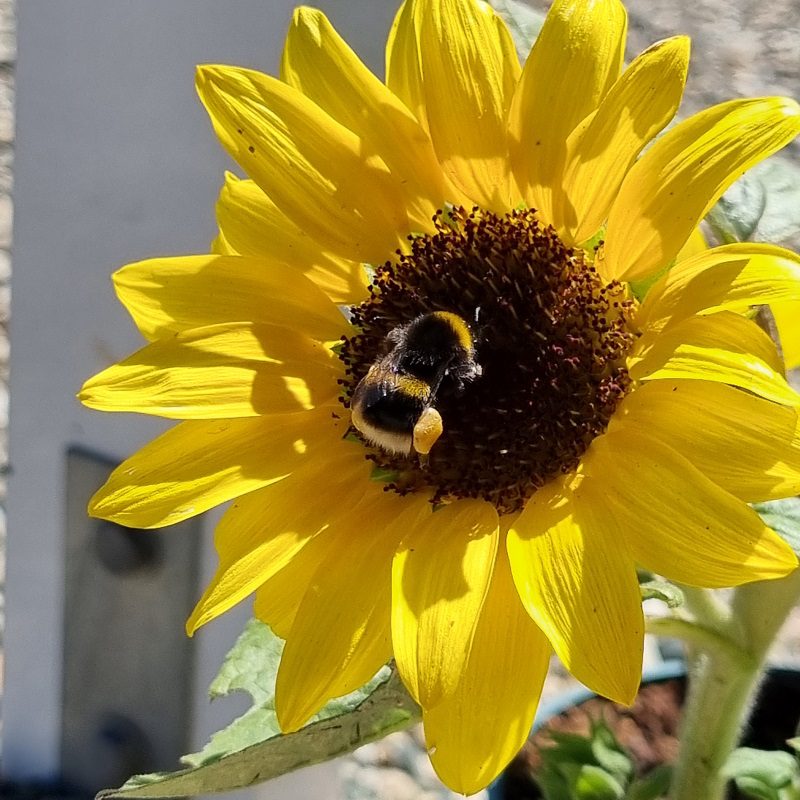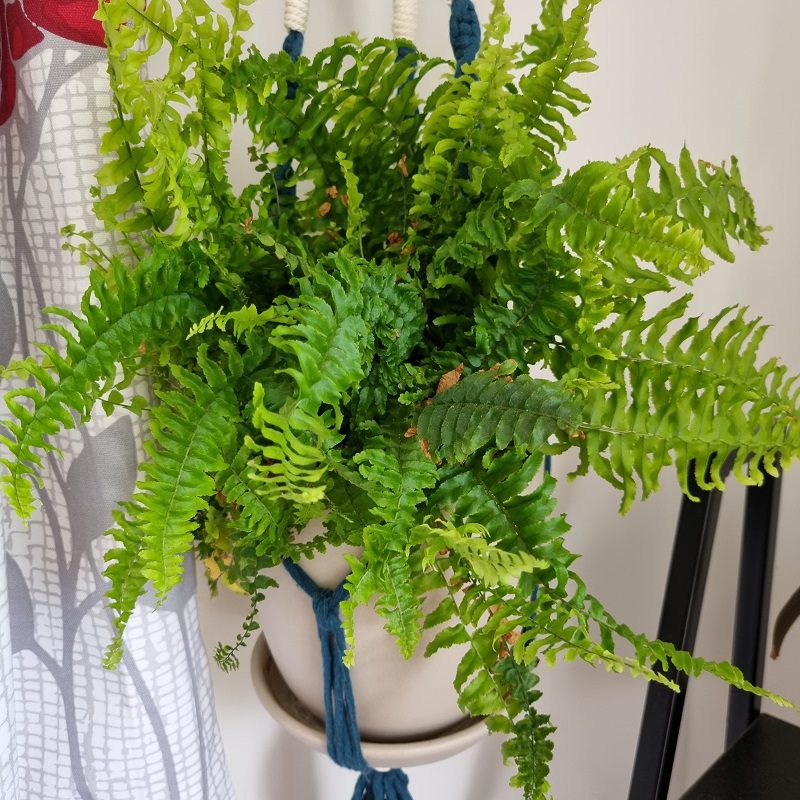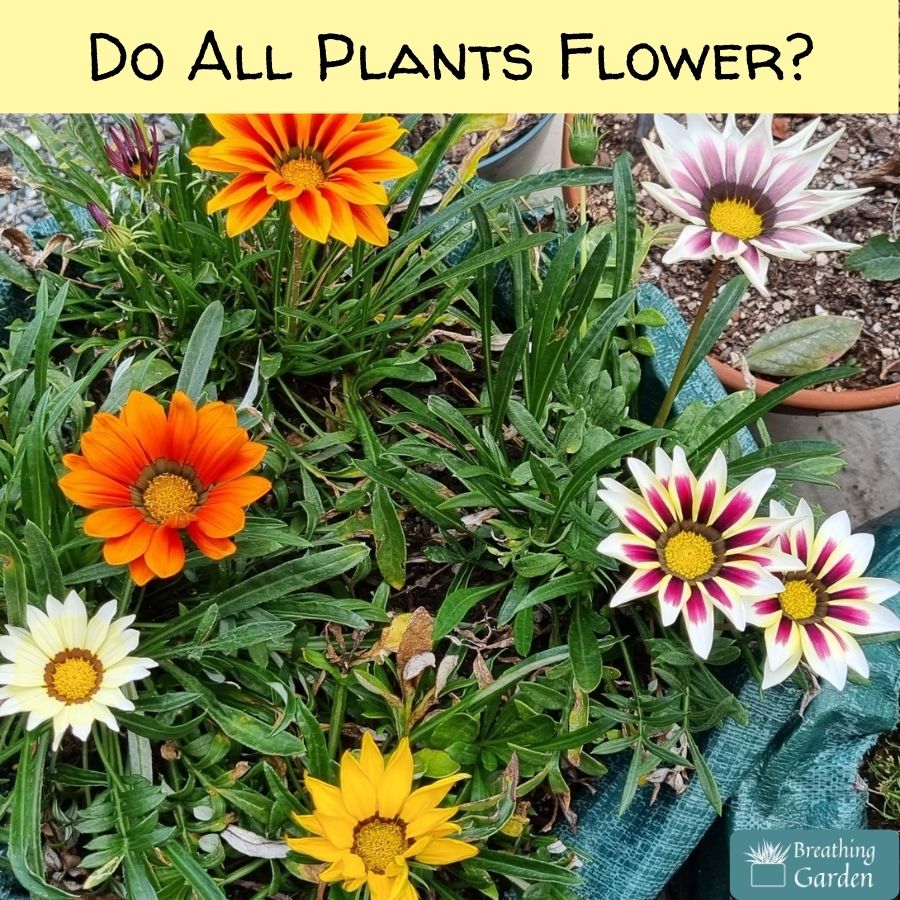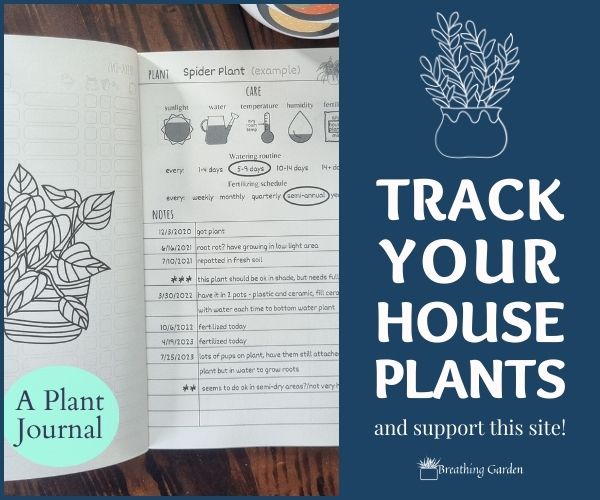When you think of plants, do you automatically imagine them with brightly-colored flowers? For many people, flowers are one of the most defining characteristics of plants. But do all plants flower? And the answer is no, they don’t all flower! Let’s explore the importance of flowers for plants and why not all plants have flowers.
*This post may include affiliate links. When you purchase items from these links, we will receive a small commission, at no extra cost to you, to help support this website. Thank you for your support! Read more ->
Why Do Plants Have Flowers?
Flowers are not just for people’s appreciation, they actually have a really important purpose for plants and their survival. For the plants that do flower (and keep reading to find out plants that don’t flower), these colorful and fragrant flowers are what attracts birds and insects to assist in the plant’s reproduction process.
Plants With Flowers Reproduction Process
For plants that do flower, the way they reproduce is typically through a seed that has been pollinated (fertilized), and then gets dispersed later on.
For most of these plants, they need a male and female flower to pollinate the plant. This is where birds and insects come in. These flowers attract them with the idea of food in the form of nectar. Nectar and pollen are both found within the flower, so by sticking their heads or bodies in to get nectar, they get covered in the pollen. As they feed on the nectar, they transport the pollens which they’ve gotten from male to female flowers, helping it become pollinated. Without these creatures, many plants would not be able to create seeds and survive in the future.

Example: Squash
One easy example of this taking place is in all forms of squash, like zucchini, or spaghetti squash. There’s one female flower that has a tiny form of the fruit under it, and a male flower that does not. If the female flower does not get pollinated in time by polen from a male flower, it will not produce the fruit. (See this example in how to grow spaghetti squash from seed)
If you are growing them in an area that doesn’t have a lot of insects or birds buzzing in and out of the flowers, you then have to pollenate the plants yourself. This makes you much more appreciative of the work that those animals and insects do while getting their own food.
Can These Flowering Plants Only Reproduce via Seeds and Flowers?
No! Many plants can have a cutting taken and roots be made off of it, especially succulents and spider plants are easy to take a cutting of and create a whole new plant from. Succulents drop leaves quite easily, and in the right circumstances, will just grow a new plant where it landed.
Other plants will just spread out via their roots, and once far enough away from the main plant, will create a new plant from the same root system (like strawberries).
Do All Plants Have Flowers?
So now that we’ve gone over why plants have flowers, let’s look at the plants that don’t have flowers! Because no, not all plants flower.
One Thing To Mention: Not all plants that can flower will flower. Some plants only flower every few years, are stressed out, or are dying. So if you’ve got houseplants that don’t seem to be flowering but should or you really want to see it, try changing how you take care of them by giving them more sunlight and less water.
So let’s look at the plants that don’t flower and why they don’t need them.
Which Plants Don’t Have Flowers?

3 of the main types of plants that don’t have flowers are conifers, moss, and ferns.
Why Do Some Plants Not Need Flowers?
The reason conifers, moss, and ferns don’t need flowers to survive is because they reproduce in different manners.
Conifers are the big evergreen trees you see. And they have pine cones (kind of in the name). These pinecones are made instead of flowers. They also produce much more pollen than flowers, so wind can carry the pollen between the trees and pollenate the cones that way.
Moss, however separates itself from the plant and then can just grow. Spores can also come off of the moss and create their own new plants.
And lastly, ferns. These have two different ways of reproducing. One is an identical plant that just grows from the same roots in a different area. And another is through a spore like process, except it still has to be fertilized. These spores are produced in the summer and scattered around the ground near the plant, and then later in the season are fertilized by sperm from the fern just by landing on the ground, hoping to meet up with the spore. (Watch a video about fern reproduction from the Science Learning Hub)
Do All Plants Flower? Summary
Flowers are important for many plants to reproduce and create new generations. Without them, many of the fruits and veggies we know and love would not have been able to be created. But not all plants need them, as conifers, moss, and ferns are examples of plants that can reproduce without them. They still need some form of help from the wind, water, or other plants to do so. But it’s fascinating to see how these different plants can survive and reproduce with and without flowers.



